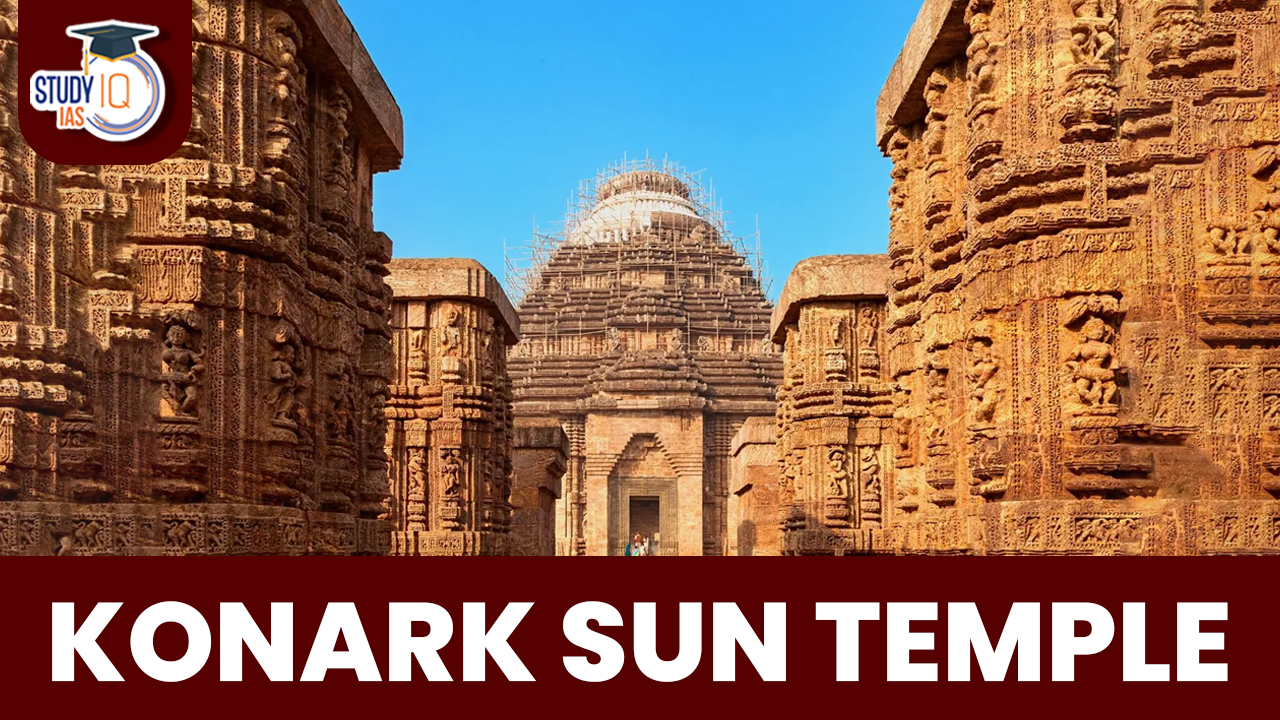Table of Contents
Konark Sun Temple
Konark Sun Temple, a UNESCO World Heritage Site, is a magnificent example of prehistoric creativity, conceptual fluidity, and a pedagogic treasure. The temple’s entrance is where the first sunrays touch since it is dedicated to Surya, the sun deity. Even though much of the temple is in disrepair and ruins, what is still there is charming enough to draw people in. An interpretation of a broader imagination, it has witnessed the rise and fall of empires and the erasure of identities while yet appealing to our senses today.
Konark Sun Temple Wheel Replica in G20
At the G20 Summit in Delhi, a copy of the famous Konark Sun Temple wheel commanded attention as Prime Minister Narendra Modi shook hands with guests.
As international leaders arrived at the summit site, Bharat Mandapam, PM Modi met them and posed for pictures with them with the Konark Chakra in the background. The Prime Minister welcomed Joe Biden and then spoke to the US President on the significance of the Konark wheel.
Konark Sun Temple History
The Konark Sun Temple, commonly referred to as the Konark Surya Temple, is situated 35 km from Puri in the village of Konark. The Konark Sun Temple was built in the thirteenth century. King Narasimhadeva I of the East Ganga dynasty is credited with building the Konark Sun Temple in 1250 CE. The Konark Sun Temple is devoted to Surya, the Sun God. A 100-foot chariot with massive wheels and horses, all carved from stone, is a representation of the Konark sun temple.
The name Konark is a compound of the Sanskrit terms Kona, which means angle, and Arka, which means the Sun. A triangle is formed by the Lingaraj temple, the Jagannath temple in Puri, and the Sun temple in Konark. One corner is formed by the Konark Temple, indicating Kona.
Konark Sun Temple Architecture
The temple is well-known for its stunning Kalinga architecture, which has a representation of a 100-foot-tall chariot drawn by horses and wheels carved out of a single stone. The monument depicts the magnificent sun god’s chariot. Built from Khondalite rocks, the original temple included a 230-foot-high sanctum that is no longer there, as well as a 128-foot-high audience hall, dance hall, and dining hall that are still in use today.
There are 24 finely crafted, 12-foot-diameter wheels that are pulled by horses. These seven horses stand for the week, the twelve wheels for the months, and the eight spokes on the wheels for the day cycle. And this entire representation demonstrates how the sun controls time by being a representation of Surya, who travels from the east in his chariot while being accompanied by his charioteer, Aruna, in Hindu mythology.
The shrine of Surya’s god, fashioned of chlorite stone, is accessible through the entrance. The temple’s walls are decorated with reliefs, which are detailed carvings of a variety of subjects, including Hindu gods, representations of everyday mortal life, birds, animals, and more. The temple’s shikhara also features tantric-inspired sensual sculptures. Sundials can be made from the temple’s wheels, which are excellent time tellers.
Konark Sun Temple Significance
Histological significance
Two Sanskrit words, Kona, which means corner, and Arka, which means sun, are combined to form the name of the Sun Temple in Konark. The town’s name, Konark, derives from the town’s geographic location, which gives the appearance that the Sun is rising at a particular angle.
The Konark Sun Temple has a long tradition of worshipping the Sun dating back to the 19th century BC. The 13th century saw the construction of the Konark Sun Temple. Konark was a component of the Kalinga dynasty’s historical domain in the 13th century, which also included portions of Chattisgarh, Andhra Pradesh, West Bengal, and the majority of modern-day Odisha. From the fifth century AD to the fifteenth century AD, the Eastern Ganga Dynasty controlled over this area. It was one of India’s most powerful kingdoms, which gave the great Sun Temple of Konark its justification.
Hindu texts frequently refer to the Konark Sun Temple as a significant site for Sun worship. According to legend, Konark’s sun temple was the first Sun temple ever constructed. In Indian scriptures, Konark is also known as Kainapara, and in the first centuries of the common period, it was a significant trading harbour.
Archaeological significance
The East Ganga dynasty’s Narasimhadeva 1 is honoured at the Konark Sun Temple. Being preserved as a palm-leaf manuscript, it is one of the rare Hindu temples whose building planning was done in Sanskrit using the Odia script. The king funded the construction of the sun temple in Konark, and Siva Samantarua Mahapatra oversaw its design. Numerous copper plate inscriptions from the time period, when the Konark sun temple was known to as the great cottage, indicate this important structure. The dance mandapa and the temple itself are the two primary buildings that make up the Konark sun temple.
The Konark Sun Temple honours Narasimhadeva 1 of the East Ganga dynasty by displaying the chariot’s wheels. It is one of the few Hindu temples whose construction was planned in Sanskrit using the Odia alphabet, and it has been preserved as a palm-leaf manuscript. The Konark Sun Temple was built with royal funding, and Siva Samantarua Mahapatra oversaw its design. This significant building is mentioned in numerous copper plate inscriptions from the time when the Konark sun temple was known as the large cottage.
The two main structures that make up the Konark sun temple, the dance mandapa and the temple itself, depict the 12 months of the Hindu calendar, which are shown in pairs, Shukla and Krishna, with each month shown twice. There are 24 beautifully carved stone wheels, each over 12 feet in diameter, that are propelled by seven horses as part of the Konark sun temple. When viewed from inside, Konark’s sun temple appears to rise out of the water at dawn and daybreak. Kapila Vatsyayan claims that the sculptures and the ground both use square and circular geometry.
Three different stone types are used to construct the Konark Sun Temple. The door lintel and the frames were made out of chlorite. Additionally, several of the sculptures made use of it. The platform’s structural core was constructed from laterite. The temple was constructed with khondalite as well. None of these stones can be found close naturally. By exploiting river routes close to the temple, the stones were brought in from a distance and transported there. The stones were then polished, and the stone joints could hardly be seen, to produce an ashlar.
Konark Sun Temple UPSC
One of the most well-known Brahman shrines in India is the Sun Temple of Konark, which was built in the 13th century. The remaining structures maintain the Sun Temple’s original shape and architecture in complete. Temple is situated in Konark village, which is 65 kilometres from Bhubaneswar and 35 kilometres northeast of Puri on the Bay of Bengal coast of the state of Odisha. Being preserved as a palm-leaf manuscript, it is one of the rare Hindu temples whose construction plans were written in Sanskrit using the Odia alphabet.


 Bahmani Kingdom (1347-1527 AD), History,...
Bahmani Kingdom (1347-1527 AD), History,...
 Indus River System, Tributaries, and Sin...
Indus River System, Tributaries, and Sin...
 Jallianwala Bagh Massacre, Date, History...
Jallianwala Bagh Massacre, Date, History...





















